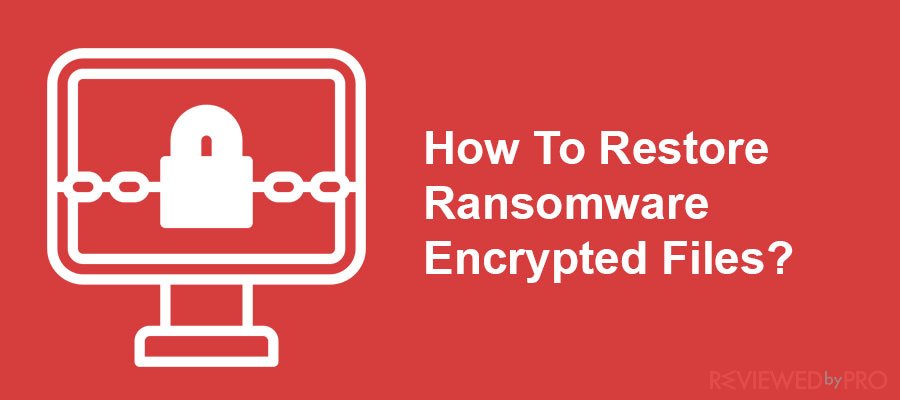
If your business has ever been the victim of a ransomware attack, you know how devastating it can be. Your files are encrypted and held hostage until you pay the ransom, which can often be quite expensive. If you have recently fallen victim to ransomware and have lost access to your important files, don't pay the ransom. There are several ransomware data recovery options you can try to restore your data without having to pay the attacker.
What is ransomware?
Ransomware is a type of cyberattack that involves malware. Once the malware has been downloaded to your device, it will lock you out of your data through encryption. The attacker will then demand a ransom for the decryption key to restore access to your data. Ransomware attacks are becoming increasingly common, so it's important to know how to protect yourself and what to do if you become a victim.
Common ways ransomware infects your system
Ransomware can enter your system in several ways. It can come in the form of an email attachment, a malicious website, or even through a legitimate website that has been compromised by an attacker. Once the ransomware is on your system, it will start encrypting your files.
Phishing emails. Phishing emails can fool even those who are very careful online. That's because they act as official senders, with what seems an authentic message. But, as you open their attachment or click on the link at the message, it downloads and installs ransomware onto your computer.
Malicious URLs. Infected URLs sent through emails or displayed on social media can also infect your network. You can use CheckShortURL to check if a link is ransomware-free.
Remote desktop protocol. RDP is a system that allows connection from different computers through a network. If one computer from the network gets infected, it puts at risk the connected computers.
How to know if you've been infected?
There are a few signs that you may have been infected with ransomware. If you suddenly lose access to your files or they become corrupted, this is a strong indication that you have been infected. You may also see a ransom note demanding payment to regain access to your data.
Most ransomware adds its encryption extension after the file name. For example, if you have a file named doc1.pdf and the Hajd ransomware is in your computer system, the file will be renamed for doc1.pdf.hajd.
How to restore ransomware encrypted files
There are several methods you can try to restore ransomware encrypted files without having to pay the attacker.
Method 1: Contact a data recovery service
Ransomware data recovery services are one of your best options (losing only for backup) to restore files after a ransomware attack.
The data recovery experts will work to decrypt your data without causing corruption or loss. Send your infected device to a free in-lab evaluation and get all the details about how your data will be restored and an approximate time and cost for the restoring process.
Method 2: Restore from a backup
If you have a backup of your important files, you can restore ransomware encrypted data from the backup. This is the easiest and most effective way to recover your data if you have been affected by ransomware.
Erase all traces of the ransomware from your device, disconnect it from the internet, and then use your backup to restore all files.
And remember to have regularly scheduled backups of your data and to use more than one backup method (such as cloud + external hard drive).
Method 3: Use a ransomware decryption tool
Ransomware decryption tools can decrypt your files so that you can access them again. However, they will not work on all types of ransomware, so it's important to research which tool will work best for the type of ransomware you have been affected by.
Emisoft often offers public decryption tools for ransomware.
Method 4: System Restore
To use the System Restore tool on Windows, you will need to disconnect your computer from the internet and remove any drives connected to it to make sure the ransomware doesn’t spread.
Then go to Update & Security > Recovery and click on Advanced Startup.
Then select Troubleshoot > Advanced options > System Restore.
Select the restoring data before the encryption and click on Next then wait until the system restore is finished.
How to prevent a ransomware attack?
There are several things you can do to prevent a ransomware attack.
- Keep your operating system and software up to date
- Use strong, unique passwords for all your accounts
- Don't click on links or open attachments from unknown sources
- Install an antivirus and anti-malware program and keep it up to date
If you follow these steps, you can help protect yourself from becoming a victim of ransomware. However, even if you take all the necessary precautions, there's always a chance that you could still be affected by an attack.
That's why it's so important to know how to restore ransomware encrypted files in case you ever find yourself in this situation and keep regular backups of your data.
Restoring your data after a ransomware attack can be difficult, but it's important to remember that there are ways to do it without paying the ransom. With the right tools and knowledge, you can get your data back without having to pay the attacker.




